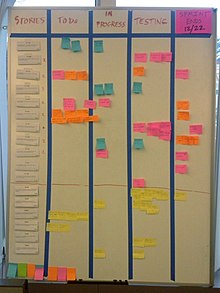Via GwynethJones, Evdokia Roka, Juergen Wagner, Miloš Bajčetić
Research and publish the best content.
Get Started for FREE
Sign up with Facebook Sign up with X
I don't have a Facebook or a X account
Already have an account: Login

Making the help and information to every body
Curated by
Ricard Lloria
 Your new post is loading... Your new post is loading...
 Your new post is loading... Your new post is loading...
|

Gust MEES's curator insight,
April 24, 2017 4:17 PM
Scrum is an iterative and incremental agile software development framework for managing product development.[1][2] It defines "a flexible, holistic product development strategy where a development team works as a unit to reach a common goal",[3] challenges assumptions of the "traditional, sequential approach"[3] to product development, and enables teams to self-organize by encouraging physical co-location or close online collaboration of all team members, as well as daily face-to-face communication among all team members and disciplines involved.
Learn more / En savoir plus / Mehr erfahren:
http://www.scoop.it/t/wordpress-annotum-for-education-science-journal-publishing
|
















Really honored by this! Thank you! It's a great way to add to my reading list!